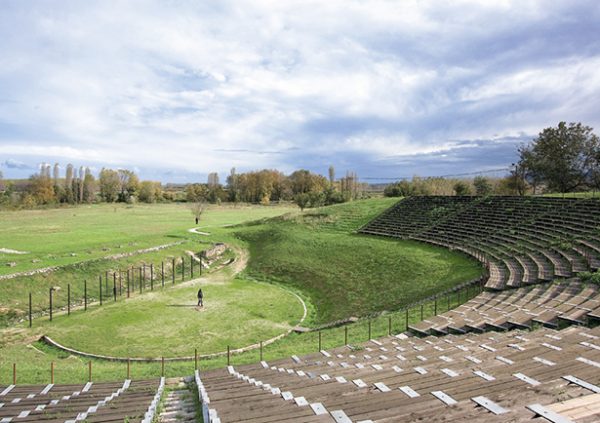The Archaeological Museum of Dion is a museum in Dion in the Pieria regional unit of Central Macedonia, Greece. The museum was established in 1983 to display excavations unearthed in the area from a fortified city that once stood in its place from the 6th century BC to the 5th century AD. The artifacts of the museum were also discovered in Olympus, the archaeological site of ancient Leivithra and the wider Pieria regional unit.

The museum contains many items from when the Romans lived in the area, including statues, architectural members, votive and grave monuments, coins, and many other objects found in the necropolis and the sanctuaries and baths of the ancient city on site. The water organ, the Statue of Dionysos, Isis and Aphrodite Hypolympia and the Asklepios Daughters are displays of particular note. On the ground floor of the museum are a number of important statues, including the Statue of Dionysos, the Asklepios Daughters and many others found in the ancient baths. The votive statues of Isis and Aphrodite Hypolympia, were unearthed from the Sanctuary of Isis. The heads of Demeter were also found in the sanctuary. The museum also contains notable exhibits from the necropolis, including further votive offerings found in Macedonian tombs and a wide collection of wooden figurines. The ground floor also displays the remains and objects found on the sites of early Christian basilicas, and a notable collection of coins. Notable coins include a gold stater of Philip II, depicting the head of Apollo and a racing chariot with two horses, and a silver tetradrachm of Alexander the Great and a head of Heracles and the Zeus Olympios. A small cinema shows a multilingual video about the history of the excavations at Dion. Professor Pantermalis informs about the past, present and the future of the ancient site.

The basement of the museum is devoted to objects excavated which relate a significant amount of information about the daily life of the people of ancient Dion, with objects used by them in daily life, and also includes more statues and items of worship from the surrounding regional unit. The museum has a wide selection of vases and jugs, ancient keys and locks and stone processing tools such as hammers and chisels. A number of notable mosaics were also discovered in a complex known as the Dionysos House. Of particular note is the item known as the Mosaic of Dionysus. However the special feature, given its own room on the upper floor, is the hydraulis or water organ, which is the first organ of its kind found in Greece and the oldest found to date anywhere in the world. The organ was described by Hero of Alexandria and Vitruvius. On a stone slab there are also the remains of an alliance agreement between the Macedonian king Philip V and the citizens of Lysimacheia in Thrace.

Transfer Thessaloniki is the best way to discover this beautiful museum! We are here to transfer you from Thessaloniki Airport to Dion Pieria. Your transfer, is our pleasure!
